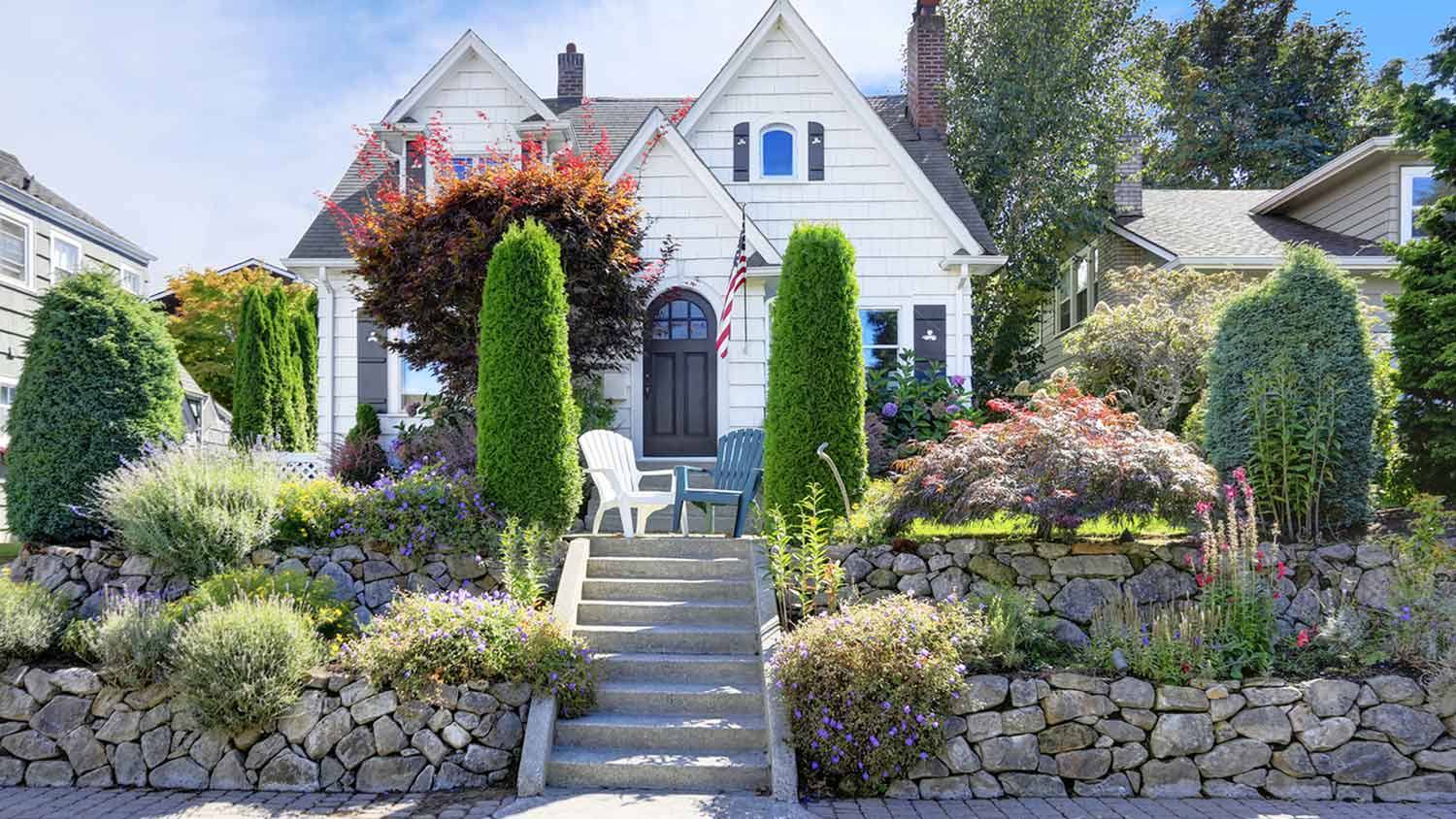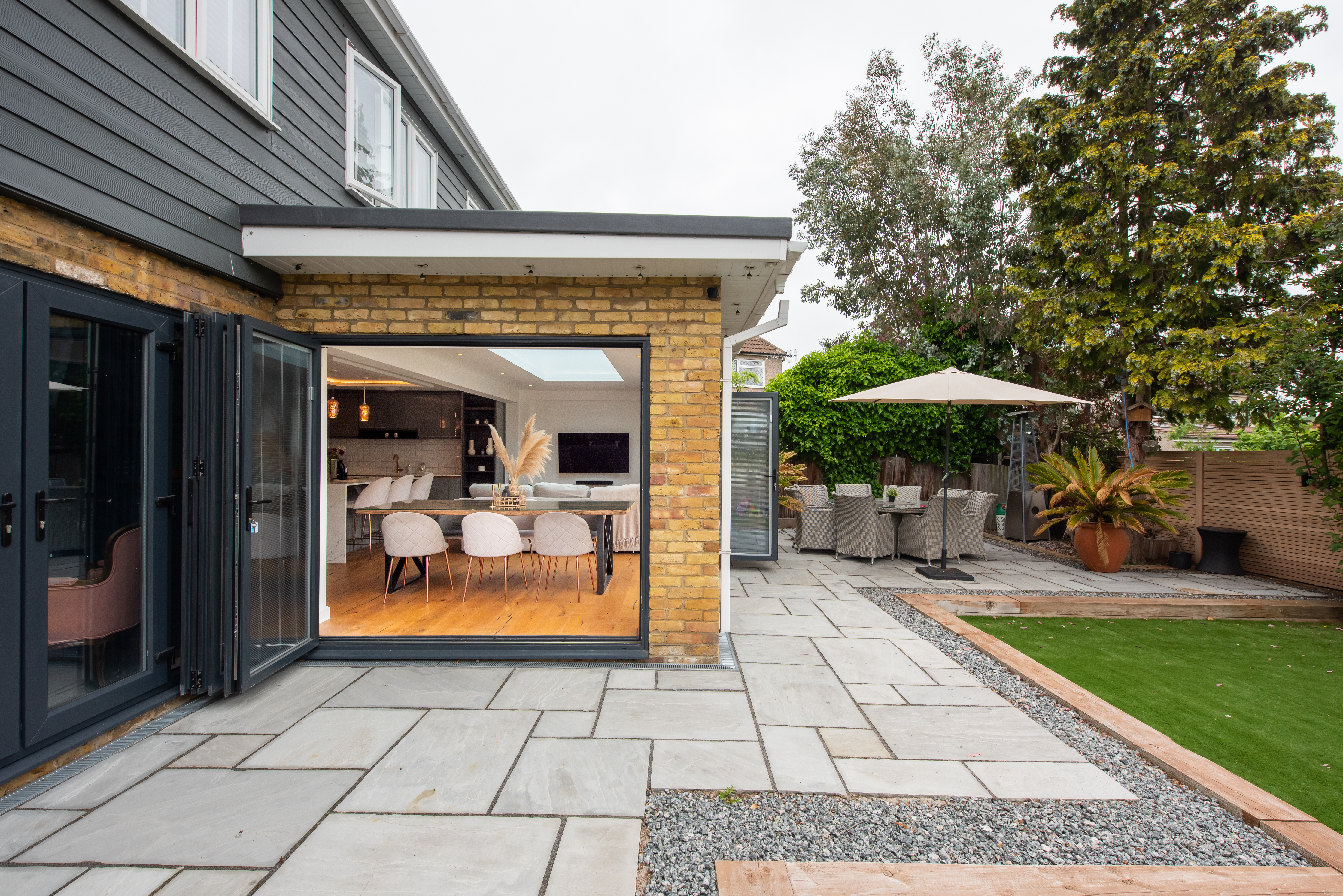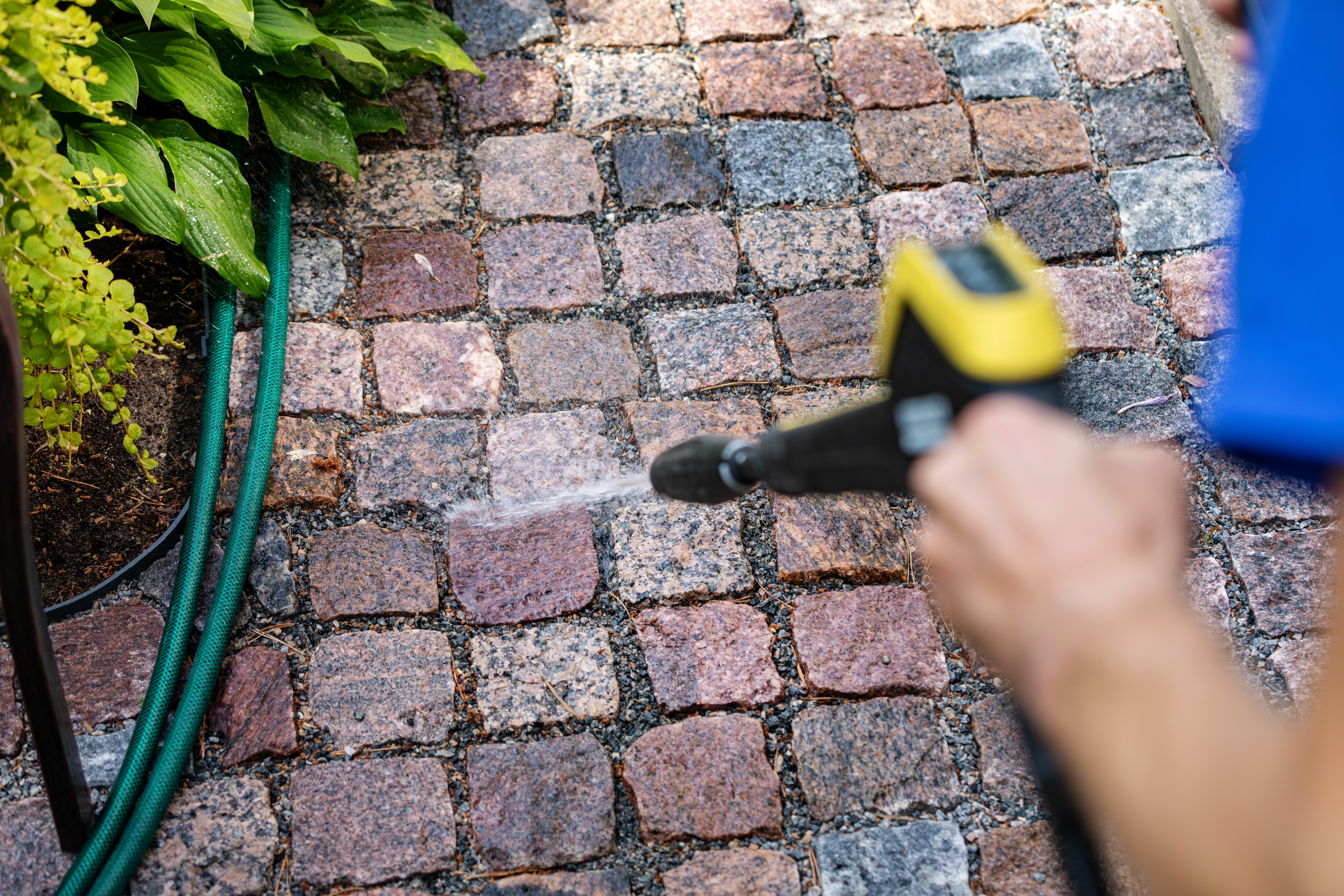
Retaining wall repair cost can vary widely based on the age and condition of the wall being restored. Learn why finding the right pro is important for getting the job done.
No more unwanted moss carpets


Professional patio cleaning costs between $100 and $300—which is about what you’d pay to rent a pressure washer.
Small mossy areas won’t need a pressure washer, but they will require a lot of elbow grease.
It’s difficult to kill moss permanently, although paver pros have a few tricks up their sleeves.
If this is a recurring issue, consider sealing your pavers once the moss has been removed.
The livelihood of moss can be problematic since it can grow on almost any surface with the necessary conditions. If you don’t want your pavers to turn into fuzzy, green carpets, then you need to remove moss growth as soon as you can. Here are some simple methods for removing moss from pavers that you can do yourself.
Moss growth is one of the most common pavement problems you may encounter. As dust and dirt combine with the sand in your paver’s joints, they form the perfect environment for moss to grow. Therefore, you may notice moss growth after the rainy season almost immediately, especially on pavers in cooler, damper areas that get less direct sunlight.
If your paver patio has drainage problems, the standing water and moisture accumulation also make it easier for moss to grow on the pavers.
Moss cleaning costs an average of $100 and $300 for an average-sized paver patio or driveway. The cost depends on the severity of moss growth, the size of the surface that needs to be cleaned, and your local labor hourly rates.

The most effective ways to get rid of moss on your own include manual removal, using bleach or chemical cleaning solutions, scattering soda crystals, or using a pressure washer. These methods can be done by yourself.
Manual removal is the easiest method and works best with early moth growth on small—and medium-sized pavers. Start with a weeder to loosen the soil, then pull out any visible weeds, including their roots. Dip a stiff-bristled brush into water, then scrub the joints to remove the rest of the moss. Rinse the area with water using a garden hose, then sweep away any remaining debris.
For slightly more stubborn moss, consider using a bleach-water mixture or chemical cleaners designed for paver cleaning. However, some types of paver can get stained or discolored by chemicals. Therefore, test your solution on your pavers at an inconspicuous spot before using it to clean off the moss.
Soda crystals are an all-natural solution to remove moss and weeds from your pavers that is friendlier for the environment and your pavers than bleach or other chemicals. To use soda crystals on moss, scatter the crystals across the mossy areas. Wet them with water, but be careful not to wash the crystals away. Leave the soda paste on the pavers for one or two days, then remove it with a broom or stiff brush. Rinse and wash the area to remove any residuals.
Pressure washing is one of the most effective ways to clean pavers. Use a low-pressure nozzle and evenly move your nozzle left and right to get rid of moss on your pavers. Avoid high pressures or washing the same area for a prolonged period because that can remove binders in paver joints or damage the surface if you use a more fragile paver material.
You can also pour boiling water on your pavers to kill the moss. Make sure the water is at least 120 degrees Fahrenheit and pour generously to submerge the root zone. Wait a few minutes and scrub the moss away. For thorough cleaning, you may need to repeat this process several times.

Cleaning is only the first step in keeping your pavers moss-free. Regular paver maintenance is what will prevent moss growth on pavers. Here are some things you can do:
Regular cleaning: active cleaning can prevent dirt and debris from building up in the joints, thus reducing the likelihood of weeds and moss growing.
Use paver locking sand: After removing moss from your pavers, refill the joints with special paver locking sand. This material hardens and creates a strong barrier against weeds and moss.
Keep your pavers dry: After a rain, sweep any standing water off your pavers immediately. Moss loves water puddles, and the drier you can keep your paver, the less likely moss will grow.
Paver sealing: Finally, you can seal your pavers to prevent moss from growing on them altogether. However, you’ll need to reseal them every 3 to 5 years.
If your moss growth is extensive, it’s best to hire a paver contractor for the cleaning. Additionally, if you’re unsure about how to pressure wash the pavers, we recommend leaving it to the professionals to avoid potential damage. Most paver contractors charge for cleaning at an hourly rate or based on surface sizes. On average, it costs $100 to $300 to get rid of moss on pavers. Paver cleaning and sealing costs $300 to $550 on average.
From average costs to expert advice, get all the answers you need to get your job done.

Retaining wall repair cost can vary widely based on the age and condition of the wall being restored. Learn why finding the right pro is important for getting the job done.

Pea gravel is a good-looking, versatile landscaping stone that's a favorite of the pros. Read about how much pea gravel costs for both installation and the stone itself.

Porcelain pavers are a high-end option for your home’s hardscaping that can completely transform your outdoor space. Here’s how much porcelain pavers cost.

If you’re looking to build a brick pathway or patio, there are lots of walkway patterns to choose from. Here’s a list of the most popular designs and types.

Use this calculator to determine how much paver base you need to successfully complete your paver project and enjoy your patio for years to come.

Wondering who to hire for xeriscaping? Learn when to call a landscaper, designer, or architect, and see how pros build water‑wise yards.